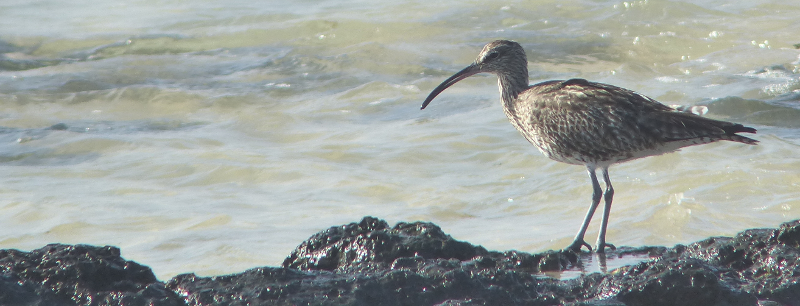Average Birding

Oare, Once More
We're so close! With our last trip the scoreboard ticked over to 196. Can we finish the job with a further trip to Oare?
Pronoun guidance: AB1 ropes in AB2.
HS1 again, again (, again?)
Another week has flown by, and we're back at Oare marshes. Where would this year list be without the HS1 link out from St. Pancras to North Kent?
This time we're looking for a Temminck's Stint. I've even managed to rope AB2 into this jaunt, having convinced her that we may as well be in North Kent for the early part of the day, given we're going to see her brother in South-East London later on.
As a result, we arrive at a rather more leisurely time than last week: just after noon, rather than before nine in the morning. There's still a substantial group of birders occupying the parking spaces on the road that splits the East and West flood; a good sign, as that's where I'd guess we're most likely to pick up the Temminck's.
The group is mixed ability and mixed motivation - some are looking for Black-winged Stilt. Others are in search of Napoleon. A few need directing to the Curlew Sandpipers, which are still on the same muddy island as last week. We eventually find a couple of professionals who have seen the Temminck's today - their advice is to keep an eye on the edge of the mud that protrudes out from the road, so we do.
This protrusion (could it be called a spit?) is long and thin, and covered in various other waders and a good number of roosting gulls. There's some distraction as someone works out that one of them is the Bonaparte's, which, in only a week, has already started to moult into slightly less obvious plumage.
We track the boundary between the mud and the East Flood's water. On the left site of the arm of mud extending into the water, there is a tiny wader dibbling about that could well be our bird. We have nearby professionals, and we choose to use them. "Folks, is that the Temminck's mucking about on the left there?" After a bit of extra directional prodding, we get confirmation, indeed, that is it.

Three to go
Well, that was easy. What to do now? Well, we might as well have a tour around the reserve; it's a lovely day for it. Perhaps we'll bump into last week's dipped White-rumped Sandpiper?
We make our way round the back of the East flood, encountering, humouring, and finally abandoning some dragonfly enthusiasts on the way. We have a good look at the Stilts from the sea wall, and the reedbed once again refuses to give up any Bearded Reedling. From the corner hide, we find some Ringed Plover (always an AB2 favourite) and admire some Curlew. Ah, there's something we can do - we should check to see if any of these Curlew are actually Whimbrel, as someone on the kentos website has reported seeing one or two along the Swale.
This is a good way to lose several hours of your life - these two species can be tedious to separate. The two pictures in the bird book showing Whimbrel versus juvenile Curlew are basically identical barring some tricky to discern head markings on the Whimbrel. Still, having seen a Whimbrel in Fuerteventura earlier in the year, I feel a bit more confident that I might be able to pick one out.
A good hundred yards West along the mud is what I think is a reasonable candidate. We'll get a bit closer and have a better look. Lots of murmuring and staring at the bird book. The bill looks right (not too big, curving suddenly at the end rather than in one graceful arc), and the bird certainly has a more slender air than some of the (borderline chunky) Curlews nearby. A little bit closer, and with the sun shining on it just right, and I can see the humbug colouration on its head. I think we're ready to call this a Whimbrel. We rope in a fellow telescope wielder and he agrees. Excellent.

In exchange, we put our Whimbrel-confirming friend on to Napoleon (who is, once again, very near the slipway end of the mud) and head back to the road view of the East flood to see if there's any more news, and to get a final view of the Temminck's before we head off.
Two to go
(Also a fine episode of Buffy --Ed.)
There isn't a great deal more news, everything is where we left it. A grass snake has a swim in the shallows - probably cooling off; it's really rather hot at this point. A family of Water Rail make an appearance off to the left, and, having missed it last week, I nearly deal myself a neck injury with the speed at which I snap round to see them. Needlessly, it turns out, as they make very leisurely progress across the front of the reeds before deciding that's enough exposure for this week. If we labelled Water Rail as 'Easy' on the spread sheet we were overconfident. They can be such secretive sods that even in places where they turn up week in/week out you can miss them.
Another valuable trip to Oare - for me, probably the UK's best birding place per square metre - comes to an end. We head back to Faversham to connect with a train back to London, via a refresher at the Railway Arms, as we discover the next one is more than half an hour away.